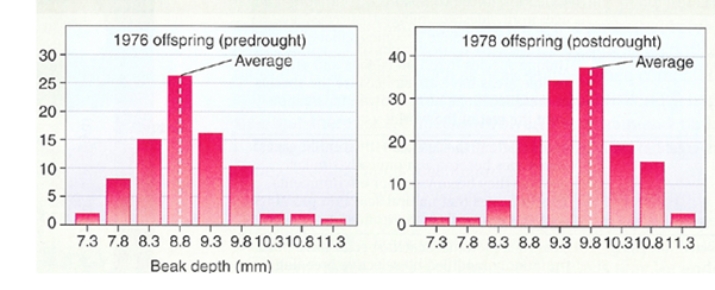Multiple Choice
Peter and Rosemary Grant study natural selection in finches on the Galápagos Islands.They have hypothesized that dry conditions produce larger seeds and may result in larger beaks in succeeding generations of finches.The figure below shows their data from 1976 and 1978.The y-axis is the number of birds measured and the x-axis is the beak depth.Do their data support their hypothesis and why? 
A) Yes;because there were more birds measured in 1978 after the drought,therefore they must have been able to get food and reproduce.
B) Yes;because the average beak depth of birds in the population increased from 8.8mm in 1976 to 9.8mm in 1978.
C) No;because even though more birds were measured in 1978,the beak size of the upper range was smaller.
D) No;because in 1976,before the drought,the largest beak depth was still 11.3mm.
E) No;more data would be necessary to show a support of their hypothesis.
Correct Answer:

Verified
Correct Answer:
Verified
Q37: What is true of a fossil that
Q38: A population of voles (small mammals)lives in
Q39: Over generations in a population,individuals with higher
Q40: Blue flower color (B allele)is dominant to
Q41: Fitness is a measure of reproductive success.If
Q43: When humans are developing in utero they
Q44: A coral species that currently inhabits a
Q45: The effect of inbreeding is<br>A)a decrease of
Q46: If a population satisfies the Hardy-Weinberg equilibrium
Q47: In red-wing blackbirds,females tend to choose males